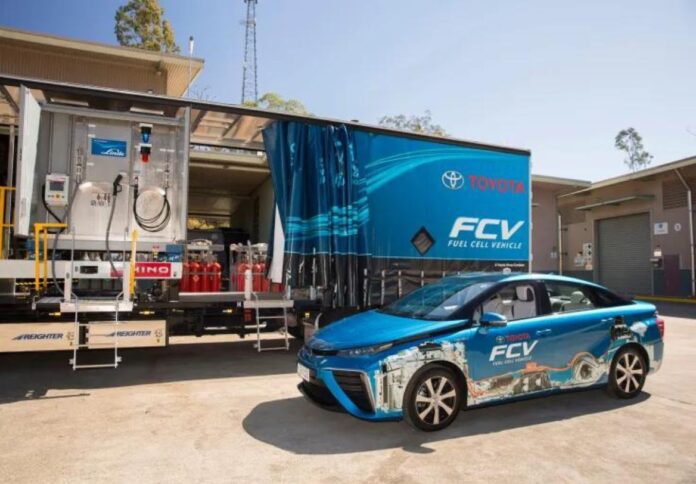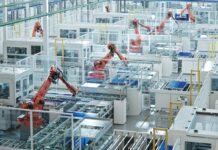
Article by Chris McKay, CSIRO ECOS
With the hydrogen industry still in the early stages of development, community acceptance will be crucial to whether it succeeds. A new CSIRO report examines public attitudes around not just how hydrogen is used, but also its production, storage and transport.
Picture a future where bus fleets, freight trucks and even family cars powered by hydrogen fuel cells are cruising side by side with battery-powered electric vehicles on our roads, leaving only water vapour and warm air in their wake.
It would be a big step towards reducing transport emissions but it’s a picture that the Australian public may only partly agree with. They like the idea of hydrogen-powered heavy vehicles but are not convinced about hydrogen cars, considering the trend towards electric cars.
These insights are captured in a new CSIRO report into public beliefs about hydrogen energy technologies in Australia. The lead author, Dr Mitch Scovell, says peoples’ attitudes towards hydrogen and its applications are likely to be shaped by things like how it is produced and how people think about its safety.
“We found people are quite supportive of having hydrogen as part of Australia’s energy mix but there was a desire for more information about how it will work, how safe it is and how much it will cost.”
The study, a collaboration between CSIRO’s Hydrogen Energy Systems and Responsible Innovation Future Science Platforms, examines what the Australian public think about hydrogen energy right across its supply chain—not just how it is used, but also its production, storage and transport.
Laying the foundation for an Australian hydrogen industry
In November this year the head of the World Trade Organisation, Ngozi Okonjo-Iweala, urged Australia to embrace hydrogen energy to reduce reliance on coal exports and support emissions reduction goals. They were words of encouragement, as she was aware the journey towards a clean hydrogen industry had already begun.
In 2019, the Council of Australian Governments adopted Australia’s National Hydrogen Strategy, informed by the National Hydrogen Roadmap that was led by CSIRO.
Investment has followed. The Australian Government’s planned investments in regional hydrogen energy hubs—a core component of the national strategy—totals $525 million, including the most recent announcement in the October budget of $71.9 million for a new hub in Townsville.
Australian energy company Ampol has made hydrogen energy a core component of its future energy and decarbonisation strategy. And it’s not only energy companies getting involved. Last year, Fortescue Metals Group announced they were directing 10% of the company’s profits to their Fortescue Future Industries initiative (a cool $1 billion in 2021), for which clean hydrogen projects are the centrepiece.
The new research about public beliefs forms part of CSIRO’s Hydrogen Industry Mission, which aims to help Australia establish a clean and socially responsible hydrogen industry by 2050.
Public beliefs about hydrogen from production to use
There are two main approaches to producing low-emissions hydrogen energy. The first uses renewable sources of energy like solar or wind to produce hydrogen from water. The second involves fossil fuels combined with carbon capture and storage (CCS) to ensure minimal emissions.
The participants of the CSIRO study supported using renewables to produce hydrogen but some believed CCS was an unproven technology and an unnecessary step in the transition to renewables.
“Overall, hydrogen was seen as a clean energy source with environmental benefits, particularly when produced with renewables, but some concerns were raised about water use,” Scovell said.
“Water use is going to be an important challenge for the hydrogen industry, particularly in a dry continent like Australia.”
Transport has dominated the conversation about hydrogen energy’s potential but there are other uses as well—as a chemical input for industry to make products like green steel or fertilisers, a source of power generation that can be fed into the grid or used off-grid, or a stored fuel source for use by industry and for export.
Asked what they think about these options, participants showed most support for industrial and heavy transport uses at this point in time.
One of the key pieces of information people wanted to know was how much hydrogen energy would cost them to use. Participants also said they would be more likely to support it if they had evidence of the technology working.
“Our results indicate to me that people want to see a slow and steady approach to development of the industry, they want to be introduced to new technology in an incremental way and to be shown that it works and is safe. So, there is a really important role here for pilot projects,” said Scovell.
Informing the energy transition
Energy companies like Ampol seem to be in line with the views of the study participants when it comes to transport. Their initial focus will be on the deployment of hydrogen to fuel large freight vehicles, according to Russell Savage, technical lead for hydrogen at Ampol.
“This research is really important for Ampol because if the hydrogen technology solutions we come up with don’t meet the expectations of the public then they’re not going to be viable,” he said.
“As we develop this new energy source, we really need to understand what the public think about it. Knowing that support for hydrogen energy increased when people had more information is encouraging and gives us the opportunity to play a role in increasing public awareness.”
Scovell is already underway with a new, larger study.
“I’ve just done a follow-up survey with about 2000 people where I’m trying to unpack the differences between peoples’ beliefs a bit more and the extent to which specific beliefs drive acceptance. So, to what extent does perceived hydrogen risk influence acceptance, for example. And exploring how the method of production, so renewables versus CCS, influences peoples’ beliefs about other aspects of the hydrogen supply chain.”
Along with other researchers at CSIRO, he is also turning his attention to the bigger picture of energy transition in Australia.
“We’re going to need a lot of large scale solar and wind projects, so we’re looking at how people are thinking about that, what their values are and what they want to see going forward with the energy transition.”




















